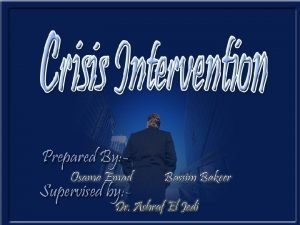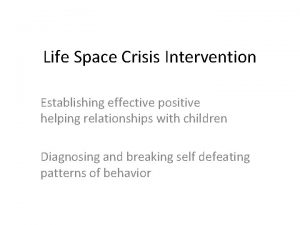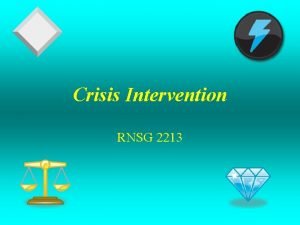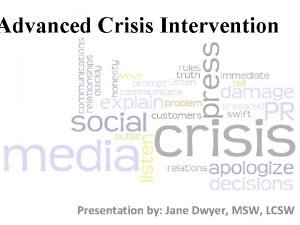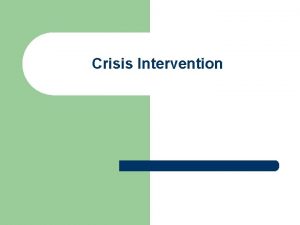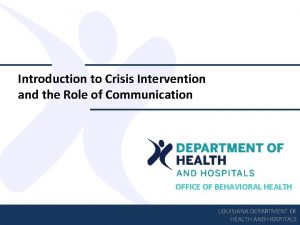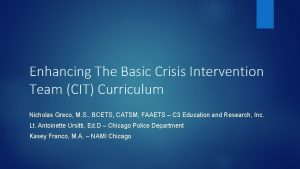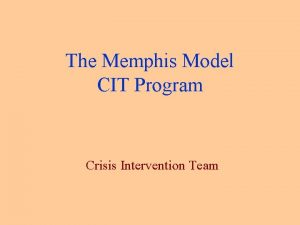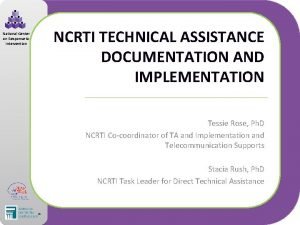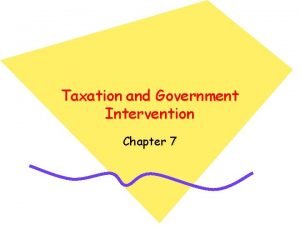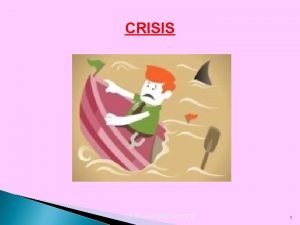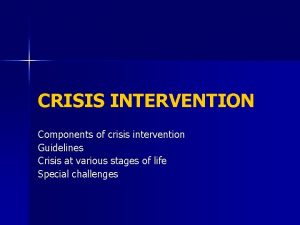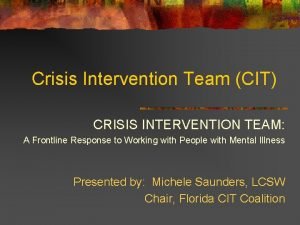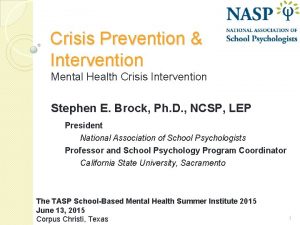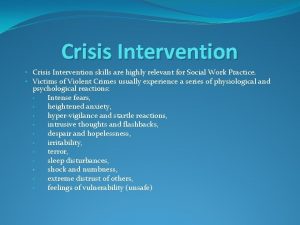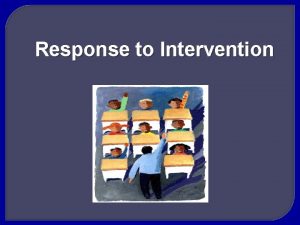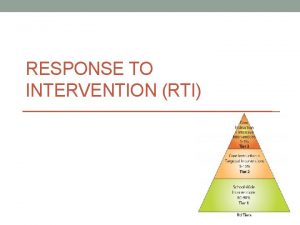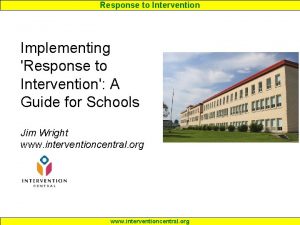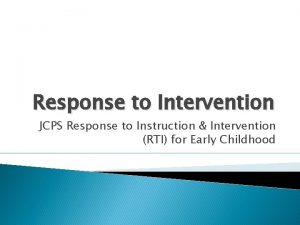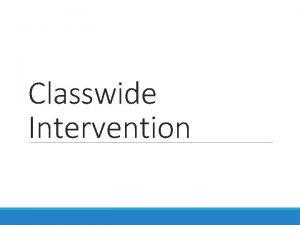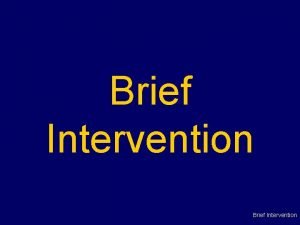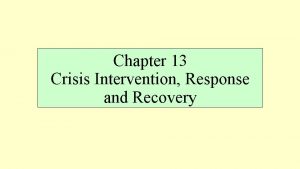MTLH 9208 CRISIS RESPONSE AND INTERVENTION LESSON 5









































- Slides: 41


MTLH 9208 CRISIS RESPONSE AND INTERVENTION LESSON 5 The ABC Model of Crisis Intervention 2

Objectives Lecture: The ABC Model of Crisis Intervention (Ch. 4) Table 4. 3 – ABC Model of Crisis Intervention – Sample script – pp. 71 -74 Role plays with feedback and discussions Review Ch. 3 & 6 3

CORE COMPONENTS OF CRISIS (TRILOGY) 1. PRECIPITATING EVENT 2. PERCEPTION OF EVENT BY CLIENT→ subjective distress 3. FAILURE OF CLIENT TO COPE 4

CRISIS TREATMENT PLAN Formula by Kanel (1999) Changing client’s perception Decrease in client distress Increase in client functioning 5

The ABC Model of Crisis Intervention Ø Very brief mental health interviews with clients whose functioning decreased after a psychological stressor. Ø Problem-focused Ø Applied within 4 -6 weeks A. Develop & maintain rapport. B. Identify problem, subjective distress, current & previous functioning; alter perceptions via therapeutic interaction. C. Develop new coping methods; offer skills and referrals; follow-up 6

Awareness & observation exercise - If time permits Interview one student for a few minutes, asking class to observe. Ask her to smile (be aware that in a real crisis situation this may be inappropriate) Send out student and change a few things about her appearance. Ask her to look sad when she returns to class. Ask class what changes they notice on person.

A: Developing and Maintaining Rapport Basic attending skills Table 4. 1, page 48 RAPPORT: state of understanding and comfort; trust and openness follows “People don’t care what you know, until they know that you care. ” (from a student of K. Kanel) 8

Basic Attending Behaviours Exercise Box 4. 1 1. Use Basic Attending Skills List (Table 4. 1) to evaluate your skill proficiency: 1. Attending behaviour Questioning Paraphrasing Clarifying Reflection Summarization “Poor interview” – learn what not to do! 9

Attending behaviour Appropriate verbal and nonverbal behaviour demonstrates that you are actively listening; enables client to speak more freely. (Table 4. 3 - p. 71) Adapt your attending behaviour to cultural and ethnic groups in following areas: 1. good eye contact 2. attentive body language; warmth 3. expressive vocal style 4. verbal following What attending behaviours are appropriate in your culture? 10

Questioning Open-ended questions allow for exploration of what the client just said. Be specific and direct. (p. 51) Close-ended questions – for facts – clients may feel defensive or attacked (p. 51) Close-ended questions such as “do you, ” “does it, ” and “are you” lead to answers such as “yes” and “no, ” which go nowhere. Change them into “what” and “how” questions! Attach the question to something the client just said. (p. 51) 11

Questioning exercises (students read from bottom of page 49) Poorly worded counsellor questions ☺ Appropriately worded counsellor questions 12

Questioning (cont’d) Don’t ask “why” questions. Avoid “would you mind”, or “could you tell me more. ” Avoid “have you” questions; they are usually forms of hidden advice. Verbal following important – listen for a new word or expressed energy behind words. Never assume that you know what the client means. INQUIRE! 13

Clarifying Purpose: 1. Not sure what client said 2. Clear up confusion or ambiguity 3. Avoid misunderstanding 4. Confirm accuracy of what you heard 5. Ask client to rephrase or restate previous message. Clarification questions: The counselor repeats something the client just said in a questioning tone to clarify all or part of what was said E. g. “are you saying” or “did you mean” Exercise: Box 4. 2 – p. 52 14

Paraphrase Helps client and counselor know that each understands the other Saying back to client in the counselor’s own words what s/he just heard the client say – like APA Encourages elaboration Helps client focus on a specific situation, idea or action 15

Reflection of Feelings Reflection: statement that reflects the affective part or emotional tone of client’s message (verbal or nonverbal) Helps client feel understood & validated. Powerful tool in creating an empathic environment Empathy: letting clients know, you understand their feelings KISS (Keep It Simple Student) The best reflections are short, and focus just on the emotion expressed either verbally or nonverbally. 16

Summarization Purpose: 1. help client to pull his/her thoughts together see if you have distorted client’s frame of reference Includes emotions, facts, cognitions disclosed throughout the entire session Useful when the counselor is not sure where to lead the client. Helps move the interview along and into sections B and C. 17

Cognitive schema as a “tree” Purpose: to unroll the client’s cognitive and emotional experience Trunk – main branches – smaller branches and twigs – leaves All parts are connected Movement up the tree as interview progresses Nature of crisis understood when you see the tree fully 18

B: IDENTIFYING THE PROBLEM Counselors need to identify the nature of the crisis: Precipitating events Perceptions about events: cognitive and emotional (subjective distress) Client’s functioning since the crisis: socially, academically, occupationally, and behaviourally 19

Identify precipitating event “What happened that made you come to see me? ” “The straw that broke the camel’s back. ” Find start of crisis: when client started to feel bad? If in denial, e. g. “nothing has happened, really” tie it to lowered functioning and a need to seek help N. B. Need to tie subjective distress to actual event/fact Figure 4. 3 - process of crisis formation (p. 58) Figure 4. 4 - increase functioning (p. 58) 20

Identify meaning or perception “Cognitive mechanics” Perception of stressful situations originate from 1. Loss of self-control 2. Loss of self-esteem 3. Loss of nurturance 4. Forced adjustment to a change in life or role Use cognitive restructuring or reframing tools ONLY if client’s thoughts and experiences are understood! E. g. Like a car mechanic: don’t mess with the engine until you analyzed the problem! BUT if they don’t understand the REFRAME – don’t use it – know your audience. 21

Identify subjective distress and functioning level How client is affected by the crisis Help express painful feelings and share other symptoms that impair their functioning Explore each area affected Box 4. 4 – differences in coping (p. 60) Battered woman Woman after rape 22

Climbing the cognitive tree Find the meanings the client gives to the precipitating event that is leading to the subjective emotional distress. Explore the entire cognitive schema until the cognitive key is found. Then counselor can alter cognitions. Table 4. 2 Review of ABC Model (p. 55) 23

Ethical Issues Box 4. 5 Counsellor must assess for the following: 1. 2. 3. 4. 5. 6. suicide/homicide child abuse elder and disabled adult abuse psychosis medical or organic illness substance abuse (questions: pp. 61, 62) Do not interrogate! Do it in a smooth, relevant manner!!! 24

Therapeutic Interaction Validation and support statements make clients feel that their points of view and subjective experience are valid. Shows that you are empathizing with their plight Helps them not to see themselves as sick, weak or bad. Let your clients know that their feelings are normal and difficult. Do not offer false hope! 25

Educational statements One of Caplan’s characteristics of effective coping: seeking reality and information Helps clients increase their knowledge of facts Helps build stronger coping skills for present and future crises. Normalize the experience or correct false ideas the client might hold. Be respectful and anticipate their tolerance for your reshaping of their existing schema. Box 4. 6 – p. 63 26

Empowering statements v These comments help the client feel more powerful and in control. v Point out choices available and how to take back personal power and overcome feelings of helplessness. (common with victims of abuse) Box 4. 7 – p. 63 v Encourage to survive abuse rather than escape from it. 27

Reframing statements Helps client view the situation from a slightly different point of view using the client’s frame of reference. Change the crisis from danger to opportunity. “When life gives you lemons, make lemonade. ” Puts problems in a solvable form - small victories Sometimes a positive perspective is changed into a negative one ------ sometimes a negative perspective is changed into a positive one. 28

Sample dialogue with client bottom of page pp. 56, 57 29

Reframing statements (continued) It is an advanced skill. Must first understand client’s current frame of reference. Ask direct questions: 1. “How do you perceive the situation? ” 2. What runs through your mind about it? ” Present strategies in an authentic, caring manner! 30

C: COPING Have client explore their own attempts at coping and think of what they would like to do now. “You must have done something or you wouldn’t have made it this far. ” What was helpful or unhelpful? Time to develop new ways of coping. If client thinks of new coping behaviours on their own, they are more likely to follow through with a plan. 31

NEVER GIVE UP! 32

Alternative coping behaviours Natural support systems, not always mental health workers (Caplan 1964) If clients are coping effectively, they will ask others for help Self-sufficiency: encouraging others to help themselves (more economical long-term) “Teaching a man to fish vs. just giving him a fish. ” 33

Alternative coping behaviours (continued) After client exhausts his own ideas, then counselor offers other ideas. Refer to … 1. Support groups, 12 step groups, long term, family, or marital therapy, shelters, etc. 2. Suicidal clients – list of hotlines to call 3. Physicians, lawyers, local churches, colleges, community mental health programs, etc. Keep updated resources and network with other crisis workers and agencies. 34

Alternative coping behaviours (continued) Encourage to journal daily, read books, view films or participate in assertiveness training or stress management courses when appropriate. Inform about community resource directories, such as: Information Niagara (online) or 211 Commitment and follow-up are vital. (phone calls, visits, written contracts) 35

Creative Coping! 36

Crisis + support = positive change A person in crisis needs as much support and help as possible from whoever is available to give it. A person in crisis can be receptive to major changes in a period of crisis. Lindemann & Caplan found that crisis resolution can result in enduring POSITIVE change. Post Traumatic Growth (PTG) – online research 37

Discussion Process your thoughts and feelings ü What stereotypes and value conflicts did you encounter? ü How comfortable were you talking about this crisis situation? ü How well do you think you could deal with others’ intense emotion in similar situations? ü What would you want to do differently next time? 38

Homework Read Chapter 5 – Suicide, homicide and psychotic crises Study key terms Complete pre-chapter quiz Information Niagara: find resources for suicide, homicide and psychotic crises On-line search: find a definition/explanation of Posttraumatic Growth 39

Role play last weekend’s homework again Practice! Helpee: Pick a crisis situation and act it out. Helper: Draw out helpee’s feelings and thoughts about crisis. Together decide how to problem-solve it. 40

DVD #2 – Pregnant woman interviewed by counsellors If time permits – Listening Skills Video 1. 2. 3. Observe development of rapport and basic attending skills Observe what they did wrong and then when acted again, what they did correctly. How did they identify the nature of her problems?
 Juniper ex 9214
Juniper ex 9214 School crisis prevention and intervention
School crisis prevention and intervention Purpose and philosophy of nonviolent crisis intervention
Purpose and philosophy of nonviolent crisis intervention Balancing factors crisis intervention
Balancing factors crisis intervention Nova crisis intervention model
Nova crisis intervention model Life space crisis intervention
Life space crisis intervention Balancing factors crisis intervention
Balancing factors crisis intervention Hybrid model of crisis intervention
Hybrid model of crisis intervention Characteristics of crisis intervention
Characteristics of crisis intervention Non violent crisis intervention techniques
Non violent crisis intervention techniques Caplan model of crisis intervention
Caplan model of crisis intervention Cpi care welfare safety security
Cpi care welfare safety security Safer model crisis intervention
Safer model crisis intervention Crisis intervention
Crisis intervention Basic crisis intervention
Basic crisis intervention The memphis model
The memphis model Bucks county crisis intervention team
Bucks county crisis intervention team Myasthenic vs cholinergic crisis
Myasthenic vs cholinergic crisis Pyramid response to intervention
Pyramid response to intervention National center for response to intervention
National center for response to intervention National center on response to intervention
National center on response to intervention Simplifying response to intervention
Simplifying response to intervention Anne arundel crisis response
Anne arundel crisis response Crisis management team responsibilities
Crisis management team responsibilities Natural response and forced response
Natural response and forced response What is natural response
What is natural response Primary immune response and secondary immune response
Primary immune response and secondary immune response 6-5 study guide and intervention rhombi and squares
6-5 study guide and intervention rhombi and squares National child health program
National child health program Early warning intervention and monitoring system
Early warning intervention and monitoring system Certificate iv child youth and family intervention
Certificate iv child youth and family intervention Producer surplus tax
Producer surplus tax Check-in check-out intervention
Check-in check-out intervention What is petition and intercession prayer
What is petition and intercession prayer 11-1 areas of parallelograms and triangles answer key
11-1 areas of parallelograms and triangles answer key What is micro planning in education
What is micro planning in education Sat vocabulary lesson 4
Sat vocabulary lesson 4 Lesson 1 thermal energy and the behavior of matter
Lesson 1 thermal energy and the behavior of matter Lesson 4 gravity and motion lesson review
Lesson 4 gravity and motion lesson review Scrap heap magnet diagram
Scrap heap magnet diagram The sun-earth-moon system worksheet answers lesson 1
The sun-earth-moon system worksheet answers lesson 1 Moos and schaefer 1984 crisis theory
Moos and schaefer 1984 crisis theory



